American researcher: China's upstream dams threaten economy and security of Mekong region

The drought that struck during the 2019 rainy season, when the Mekong River hit its lowest levels in half a century, ravaged the livelihoods of farmers and fishers living along the lower Mekong countries of Laos, Thailand, Cambodia and Vietnam. Initially, it was widely thought that the sharply reduced levels of water were primarily due to unusually low rainfall caused by an El Nino weather system.
Only in April 2020 did these nations learn the key cause of drought when a US research company released satellite images that showed dams on the upper reaches of the Mekong in China holding back large quantities of water at a time when its southern neighbours were facing devastating shortages. China had said that it was encountering low levels of rain itself when in fact it was blessed with higher-than-normal levels of water upstream along the 4,300-kilometre river.
China denied the findings of the Eyes on the Earth and seemingly did little, if anything, to release water from the reservoirs of its dams, resulting in a second devastating drought in the lower Mekong in 2020. This two-year drought, which resulted at times in the river's water level being three metres lower than normal at the river gauge in Thailand nearest to China's border, wreaked havoc on the livelihoods of the 60 million people living along or near the lower Mekong.
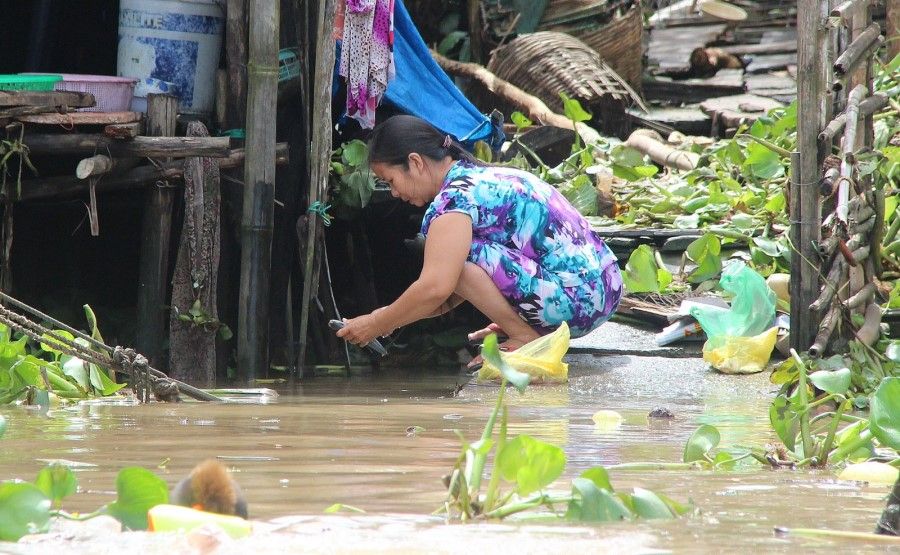
Beijing's financing and constructing of dams in Laos have also had an economic impact. The debt burden of Laos' state-owned utility Electricite du Laos (EDL) in 2020 reached about US$8 billion, nearly 50% of Laos' GDP. The sharp decrease of government revenue in the wake of the Covid-19 pandemic made it more difficult to service the company's debt, prompting Laos to spin off part of EDL into a new entity in which a Chinese power grid firm took a giant stake. This marked the first known case in Southeast Asia in which a country fell into a "debt trap" with China and had to turn over a stake in a key company to service the country's loans.
China has built 11 hydropower dams on its section of the world's 12th longest river that have the combined capacity to store as much water as the Chesapeake Bay in the US, or about 18 trillion gallons of water. Nine others are on the drawing board.
Since the Mekong is so vital to economic life in mainland Southeast Asia and western China, analysts have begun viewing the river as the possible next hot spot between Beijing and its southern neighbours, much like the South China Sea has become. This has prompted the US to call out some of China's actions and join Japan and Australia in providing various types of aid and capacity building to the lower Mekong nations.
The environmental impact
China has built 11 hydropower dams on its section of the world's 12th longest river that have the combined capacity to store as much water as the Chesapeake Bay in the US, or about 18 trillion gallons of water. Nine others are on the drawing board. Chinese conglomerates are also in various stages of planning to finance and/or construct about half of 11 dams planned for the mainstream of the river in Laos and Cambodia. The dams in these two countries will have an even bigger impact than those in China because the Mekong in these countries provides roughly four-fifths of the water and sediment downstream.
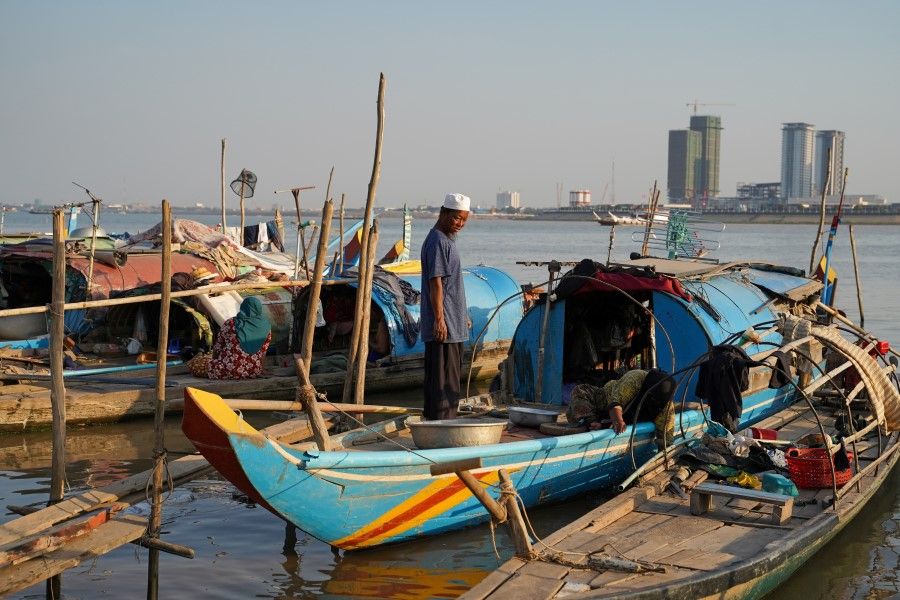
The dams built or funded by China are creating apprehension downstream. They will not only impact the water flow, but also restrict the movement of fish and diminish the flow of sediment which farmers and fishers depend on along the lower Mekong. During the dry season, more than 40% of the water in the Mekong comes from melting glaciers and water runoff in China's portion of the river which begins in the snow-covered mountains of Tibet.
Water from China is vital to rice production in the downstream countries of Laos, Thailand, Cambodia and Vietnam, especially during times of limited rainfall. This is particularly true in southern Vietnam's Mekong Delta, which grows half the country's rice and nearly three quarters of its fruits and vegetables. Freshwater from China helps this low-lying region against invasion of saltwater from the South China Sea. Rice production in Thailand and Vietnam, two of the world's largest exporters, fell sharply in 2019 and 2020.
The loss of sediment is also starving the banks along the river and the Mekong region of the nutrients needed for crop production, causing billions of dollars in losses.
Sediment carried by the river, about half of which comes from China, has also long been critical for protecting the Mekong Delta against intrusion by the sea. But much of the silt is now blocked by the dams, which do not have effective sediment flushing systems. The quantity of suspended sediment dropped to 10 metric tons in 2009 from 60 metric tons in 2003 in Chiang Saen in northern Thailand and is expected to block some 96% of all sediment if all the dams currently proposed are built. The loss of sediment is also starving the banks along the river and the Mekong region of the nutrients needed for crop production, causing billions of dollars in losses.
China's dams also block fish migration between the upper and lower regions of the river, which hampers spawning and causes a sharp drop in fish stocks downstream. This decline of fish movement will cause losses to China's southern neighbours of over US$16 billion in the years until 2042.
Laos in a 'debt trap'?
Laos has built 60 hydropower dams on the Mekong's tributaries and two on the mainstream to fire up the landlocked and mountainous nation's economy. Vientiane is planning up to eight more on the mainstream despite complaints by Thailand and Vietnam about the environmental impact to their countries. Most of the Lao-produced electricity is exported to Thailand, where demand has dropped sharply in the wake of the pandemic.
China has financed and/or built about half the dams along the Mekong and its tributaries. The Export-Import Bank of China and China Development Bank have provided billions of dollars in loans for the dams in Laos, and companies such as Sinohydro Corporation and Power China Resources have constructed many of the barrages.
Vientiane's plans for hydropower dams have created tensions with its neighbours downstream. Before building the US$3.5 billion Xayaburi Dam, Laos' first on the mainstream, the government in 2011 promised to consult with its neighbours under a process set up by the Mekong River Commission, an inter-government organisation designed to promote sustainable development and joint management of the river. But the next year, Laos signed a contract with a Thai firm and began construction, despite objections from Vietnam.

A similar situation developed around the Don Sahong Dam near the Cambodian border. Laos had agreed with its neighbours to perform an impact study before starting construction, but two months later Vientiane announced that construction would begin. Thailand, Cambodia and Vietnam requested more time to complete the study, but Laos pushed ahead with construction.
Laos is determined to press ahead, even though its external debt - much of it related to loans from China for dams - is becoming unsustainable.
A number of Lao plans for dams began facing strong opposition from civil society organisations and villagers in Thailand, which is purchasing much of the electricity Laos is producing. These groups protested the impact of the dams on the migration of fish and the flow of sediment downstream. The Thai government has deferred a decision to sign a power purchase agreement for the output of the planned Pak Beng Dam on realising that it had overestimated the nation's electricity needs until 2036.
Laos is determined to press ahead, even though its external debt - much of it related to loans from China for dams - is becoming unsustainable. Laos' foreign obligations by 2019 had reached nearly US$17 billion, slightly less than the country's GDP, of which a little over US$10 billion were public and publicly guaranteed debt. China accounted for nearly half of all Lao external debt. The debt of EDL, which played a vital role in many of the hydropower projects, stood at roughly US$8 billion, over 40% of GDP.
In September 2020, Laos created a new company out of EDL, calling it EDL Transmission Company (EDL-T), which would be responsible for the country's domestic electricity transmission grid. It then turned over a roughly 90% stake in the new company to a Chinese state-owned firm, China Southern Power Grid Co. Ltd. How much the firm paid for its stake has not been made public nor is it clear if the newly formed company will take on some of the Lao government debt. EDL officials insist that the transaction has not resulted in a loss of sovereignty because, they say, the Chinese firm is a professionally run utility company.
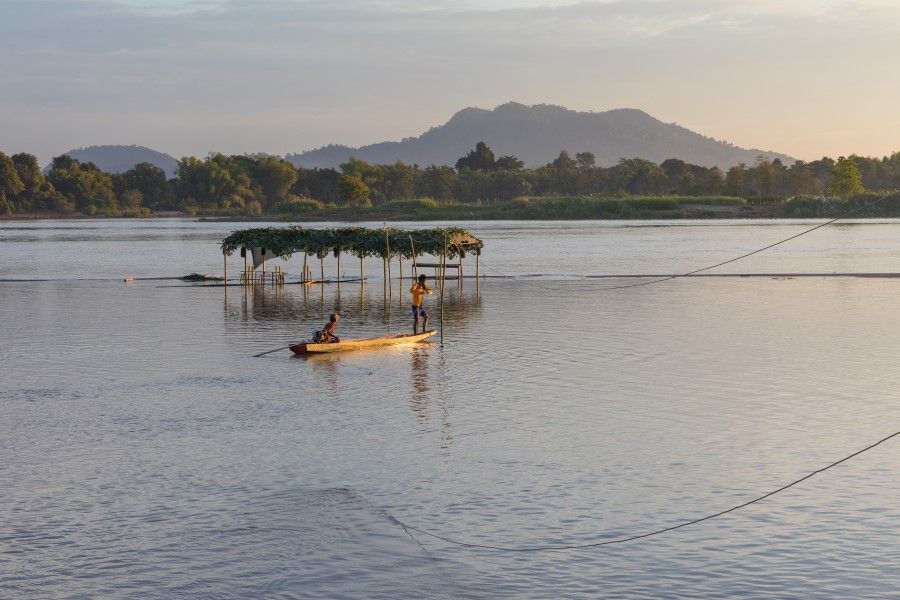
The following month, EDL, still facing debt repayment pressures, sold roughly a quarter of its shares on the Lao Securities Exchange in EDL-Generation Public Company to a prominent Lao construction firm active in the energy sector. The Lao government reportedly is considering selling a separate stake in the Nam Ngum 3 hydropower project to other investors, possibly including China Southern Power, a company from Thailand and another from Laos.
Fish migration threatened
About half of Cambodia's population makes its living farming on the floodplains created by the Mekong and its tributary the Tonle Sap, or fishing along the two rivers. When the yearly monsoon rains begin around May, massive quantities of water flow up the Tonle Sap and expand by roughly fivefold the dry-season size of Tonle Sap Lake. As the rains subside towards the end of the year, Tonle Sap River reverses course and drains the lake's water back into the Mekong.
This annual cycle plays a critical role in the migration and spawning of fish, a process that has been severely impacted by the recent droughts and the holding back of water behind China's upstream dams. Fishers along the Tonle Sap, the world's largest inland source of fish which supplies around three-quarters of the country's protein, reported that their catches in 2019 were down some 80% or more.
China is also a major investor in and builder of dams in Cambodia. The Lower Sesan 2 Dam, in which a Chinese company holds a majority stake, is projected to have an outsized impact on the environment. A US environment organisation that did a study of the dam for the Cambodian government concluded that it is "the most destructive dam in the Mekong River basin." The dam, inaugurated in 2018, is expected to block the migration of fish, on which millions depend for their livelihoods.
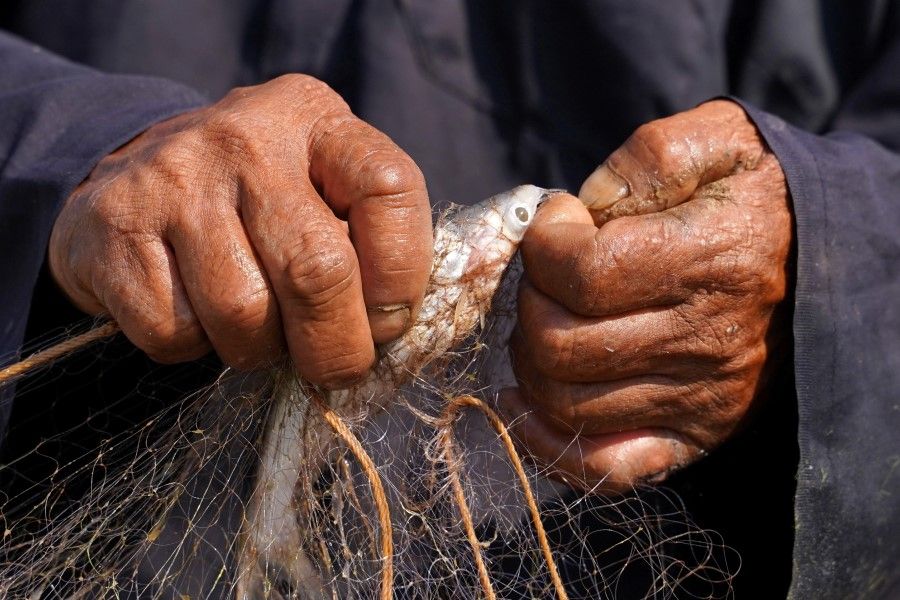
Nearly 80,000 people living above the Lower Sesan 2 dam are expected to lose access to migratory fish on which they rely for their livelihoods. But a larger population will be hit by losses of protein and sources of income because the dam will block the movement of fish between the Sesan and Srepok tributaries of the Mekong and the Tonle Sap to spawn.
A 2012 study by the US National Academy of Sciences found that over a million tons of freshwater fish were caught each year in the floodplains of Cambodia and Vietnam. The authors estimated that the population of fish would drop by 9.3% due to the Lower Sesan 2 Dam. They found that the Mekong had some 900 species of fish, over 100 of which would be affected by the dam blocking their migration patterns.
Another dam, the Sambor, which was designed by China Southern Power Grid Co., would be even more "devastating" to migratory fish, according to a 2017 study by the U.S. National Heritage Institute. The authors reported that it would create a barrier that would make it impossible for fish to move from Tonle Sap Lake to spawning grounds upstream. The dam would block 60% of the suspended sediments that provide the food needed to sustain fish, and as many as 80 long-range migratory fish species would be "endangered" by the dam.
Beijing has pressed Bangkok to allow the Chinese patrol boats to go further but the Thais have pushed back out of concern that this would allow China to extend its economic and strategic reach deep into mainland Southeast Asia.
Thailand limits China's security influence
Decades ago, after Thailand abandoned building hydropower dams at home under pressure from civil society, it began looking to Laos to fill the energy void. Thai companies gave the Lao credit to build dams and its construction firms helped design and build many of them. But Bangkok began withdrawing support for Lao dams after one collapsed in southern Laos. Under pressure from civil society, Thailand delayed signing an agreement to buy electricity from the planned Pak Beng Dam after realising that officials had overestimated the country's power needs, and because the costs of producing wind and solar power had dropped sharply.
Beijing has long pressed to send large cargo vessels carrying up to 500 tons of goods down the Mekong from southern China at least as far south as Luang Prabang in Laos. But that would require dynamiting some gigantic rocks and dredging the river near Chiang Saen, which Thai environmentalists have vigorously opposed because it would affect the ecology of the river and harm food security for people along the river. Thai officials put the project on hold in 2017 and three years later cancelled it totally.
After drug dealers killed 13 sailors during an attack on two cargo vessels in the Thai section of the Mekong a decade ago, China has been sending armed Chinese police boats down the Mekong through Myanmar and Laos about once a month. These boats travel to the Thai section of the river where they are met by Thai patrol boats before returning to China. Beijing has pressed Bangkok to allow the Chinese patrol boats to go further but the Thais have pushed back out of concern that this would allow China to extend its economic and strategic reach deep into mainland Southeast Asia.
The downstream countries have traditionally gotten about 40% of their water from the Chinese section of the river during the dry season and 18% during the rainy season, but those percentages have been reduced sharply by the dams upstream.
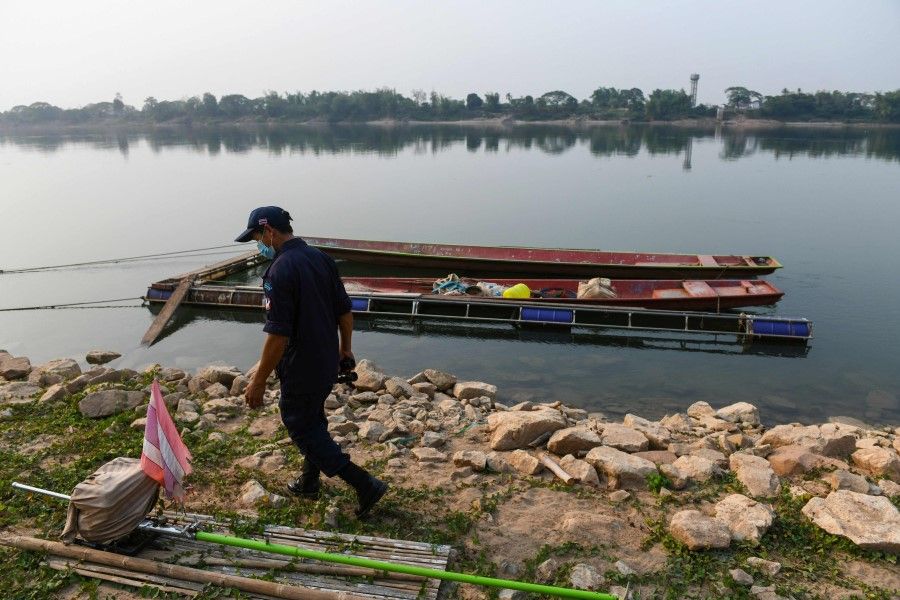
Dams imperil Vietnam's fertile Mekong Delta
The Mekong Delta in southern Vietnam, where about 22 million people live, supports some of the world's richest farming areas. The low-lying plain, roughly the size of Denmark was created by mountains of silt from the river, some of which came from the Himalayas. The delta produces three rice crops a year, which has turned Vietnam into a major rice exporter. But the delta is barely above sea level and is vulnerable to the incursion of saltwater.
Because of the delta's unique features, it is in a very vulnerable situation. The dams that the Chinese, Lao and Cambodians are building upstream block water, hold back silt and obstruct the movement of fish. The downstream countries have traditionally gotten about 40% of their water from the Chinese section of the river during the dry season and 18% during the rainy season, but those percentages have been reduced sharply by the dams upstream.
Beyond 2020, the sediment that reaches the Mekong Delta in Vietnam is estimated to be only about one-third of the level in 2007. The dams also block fish migration and are expected to cause a drop in fisheries income in the countries south of China of up to US$22.6 billion over 24 years, according to a 2018 study.
Beijing can help ease the threat of drought downstream by providing more information about how much water it is storing behind its dams and agreeing to release more water during the rainy season.
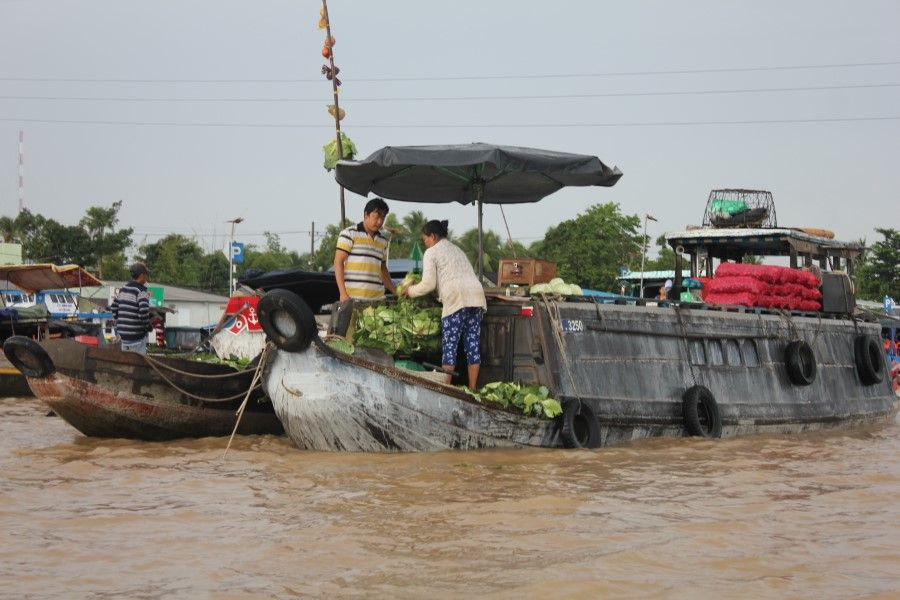
Mekong is everyone's responsibility
The physical, ecological and economic future of the Mekong is under threat from upstream dams. For the Mekong to remain healthy and survive will require that China and its Southeast Asian neighbours find ways to share the river's water, fish and silt. This will also ensure that the Mekong does not become a security flashpoint like the South China Sea has become.
Beijing can help ease the threat of drought downstream by providing more information about how much water it is storing behind its dams and agreeing to release more water during the rainy season. This water is needed for farming downstream, but also to save the Tonle Sap's fishing industry, and keep the Mekong Delta from being submerged under saltwater.
The international community, including the US and Japan, can help landlocked Laos figure out how to build its economic future without constructing more costly, environmentally damaging hydropower dams. If Laos looked to solar and wind farms, its Thai and Vietnamese neighbours would be more inclined to buy more electricity from it to help drive their economies.
This article was first published as ISEAS Perspective 2021/34 "Upstream Dams Threaten the Economy and the Security of the Mekong Region" by ISEAS - Yusof Ishak Institute.
Related: Chinese academics: Mekong must not become second South China Sea | Role of Vietnam in Mekong: A middle power in another US-China geopolitical battleground | China-led Mekong project terminated as Thais protest: Participatory diplomacy in action? | The Mekong River's future and the role of China | Major powers react to rising Chinese influence in Mekong
